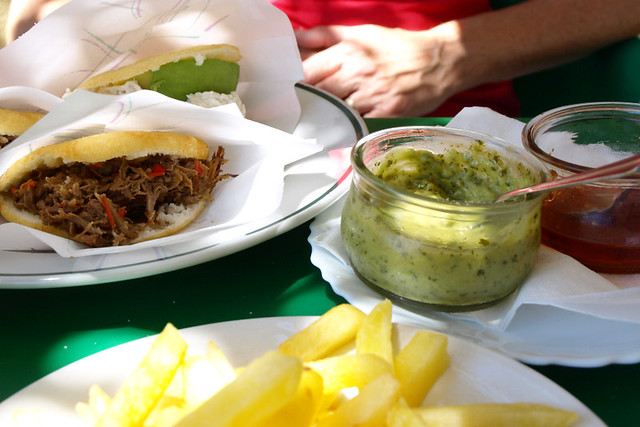The other night, our neighbours introduced us to a sauce neither of us had previously encountered, Brussel sprouts ketchup. Brussel sprouts are my least favourite vegetable. No matter how many different ways I try them, they can’t shrug off that label. Corrupting my chips with a dollop of Brussel sprouts ketchup risked sacrificing the ones the green sauce came into contact with. However, it was rather good, not as sweet as conventional ketchup, and that suited my tastebuds. Looking at the pale green splodge on my fries stirred memories of a different verdant sauce from the Canary Islands, but not the one that regularly gets a mention in travel articles.
Even tourists who don’t venture further than their hotel pool when they visit the Canary Islands have usually heard about, and even tried, mojo verde and mojo rojo. These savoury and sometimes spicy green and red sauces are synonymous with papas arrugadas (wrinkled potatoes), another Canarian gastronomic speciality everybody knows about.
It wasn’t mojo verde that popped into my head as I tried the surprising alternative to ketchup, it was avocado sauce. No, not guacamole, but a smoother, runnier sauce called guasaca. It usually comes in a big plastic bottle and is an essential accompaniment to arepas (flat corn breads), something else you don’t tend to read about in travel articles about the islands, even though they are one of the most popular of fast foods … in the western islands at least.
To be fair, arepas are Venezuelan rather than Canarian but, as there is a strong Venezuelan connection with the Canaries, they are as much a part of the archipelago’s culinary scene as curries are of Britain’s. Arepas were our preferred ‘junk food’ when we lived on Tenerife, specifically ones filled with chicken and avocado or carne mechada (spicy shredded beef). The avocado sauce works particularly well with the chicken arepas while a spicier red sauce, mojo picón, adds a hefty kick to a carne mechada arepa. Whereas the guasaca is creamy and mild, some mojo picóns can be wowser hot, something of an anomaly in mainland Spanish cuisine, but then Canarian gastronomy owes as much to its fiery relatives to the west as it does its forebears to the north.
While the sauces above accompany arepas, others turn up regularly in Canarian restaurants. One that gets the juices flowing at the start of a meal is alioli (aioli in some places), the moreish garlic mayo that originated in Catalonia, accompanied by a basket of bread. It’s also very welcome when paired with churros de pescado – goujons of fried fish. Then there is the neon yellow mustard sauce, sometimes sweetened by the addition of honey, that invariably accompanies alioli and tomato ketchup as part of the messily anarchic papas locas, not a dish for people who aren’t keen on having condiments on their food.
Mojo verde and mojo rojo hog the highlight when it comes to sauces associated with the Canary Islands, but for me they’re only part of a wider set of Canarian condiments.







Be the first to comment